Throughout my childhood there was a framed print of Winslow Homer’s oil painting “Eight Bells” hanging in the hallway between my bedroom and the bathroom. It depicts two New England mariners standing at the bulwarks of a sailing ship on a heaving sea with the dark lumpy clouds closing over them and threatening rain. Both men are wearing sou’westers. That set the standard for me at an early age and sou’westers have been the only kind of wet-weather hats I’ve worn while boating.
For the past few decades, I’ve worn a Black Diamond Sou’wester. It’s made of canvas and painted with a black rubbery coating. Mine was showing signs of age—the rubber coating was beginning to peel. The Black Diamond is no longer being made so I had to go looking for something else to replace it. In my search I saw that Best Coast Canvas (BCC) had recently added to its lineup the Nor’wester, a version of a sou’wester named for BCC’s home in the Pacific Northwest. I’d been impressed by BCC’s Verksted Apron and was eager to try the new headgear.
 Photographs by the author
Photographs by the authorFolding the brim up creates a gutter to direct rainwater to the sides so it doesn’t drip in front of the eyes. It still provides good protection for the face.
The Nor’wester is made of waxed cotton canvas and lined with wool. The sewing is first rate. The earflap, also lined with wool, has a cotton drawstring and a spring-loaded toggle. The brim has two layers of waxed canvas sewn over a third layer of canvas sandwiched inside for additional stiffness. That said, the Nor’wester is not at all as stiff as other sou’westers I’ve owned. Facing a 25-mph wind, I could feel the front of the brim put a little pressure on my forehead, but the Nor’wester didn’t flutter and stayed firmly planted on my head. Unlike many sou’westers, including the Black Diamond, the Nor’wester is crushable and can be rolled up and tucked in a raincoat pocket when it’s not needed.

The tail end of the brim has plenty of length to protect the neck and keep rainwater from flowing down a jacket collar.
The sizing guide on the BCC website worked well for me: the XXL is just the right fit, neither too loose nor too tight. The wool liner is very comfortable and warm, even after I poured water over the wool. It soon felt warm again against the bare skin of my ear. The front of the bill can be worn extended downward to shield the eyes or folded up to make a gutter to divert rainwater to the sides of the hat.

The interior of the crown and the ear flap are lined with a thick and warm woolen fabric.
The BCC website notes the Nor’wester is “not waterproof but is water resistant.” It kept me dry in a gully washer that overwhelmed my street’s gutter drains and poured over the curbs, but the downpour lasted only 20 minutes. To make a longer-lasting trial, I had to resort to simulating a steady rain in my bathtub with a small electric fountain pump. For my first trial, I let the water splatter over the hat for three hours.

A bathtub, a small water pump, a length of tubing, and a gizmo I made from a coat hanger and a disc of copper create hours-long showers for evaluating the Nor’wester’s waterproofing.
Halfway through, I saw a few small beads of water forming on the underside of the back half of the brim, and by the end of the session there were more beads. But the wool-lined crown of the hat remained dry. In actual use, I imagine that any water that might collect under the long tail of the Nor’wester would shake off and fall onto the raincoat I would be wearing.

Prior to a treatment with wax, the waxed canvas is dark blue and water is partially absorbed without leaking into the crown.
The BCC website adds: “You can make it more water resistant by re-waxing it over time as needed with wear and applying wax to the seams.” I applied a coating of the wax BCC offers in a 40ml tin. The wax goes on easily with a soft cotton cloth. After I had waxed the outside surface of the hat (paying special attention to the seams) I rubbed it with a bare hand, thinking the warmth would help the wax further penetrate the canvas. When I finished, the fabric had a glossy sheen, was dry to the touch, and had darkened from dark blue to black. I liked the transition; it gives the hat the more traditional look of early foulweather gear, which was once waterproofed with a formula that included lamp black.
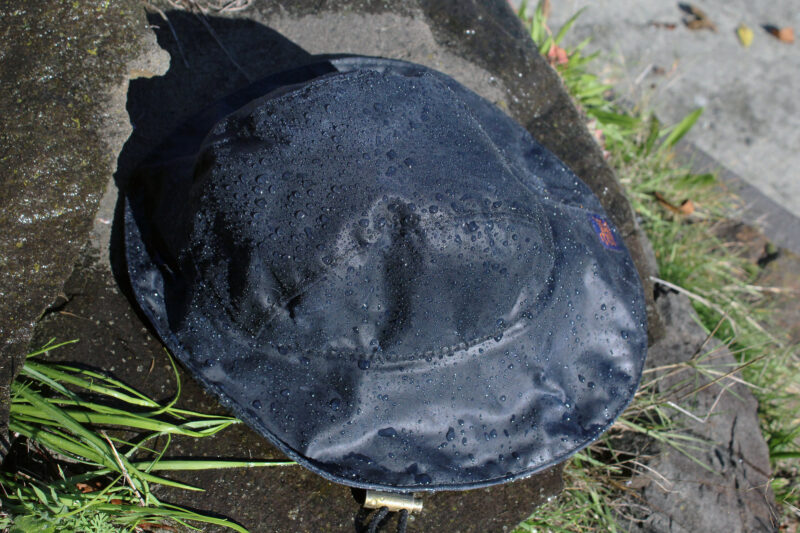
An application of wax turns the canvas from blue to black and gives it a glassy, water-repellent surface. Note how water beads up without getting into the weave of the canvas.
During a second trial, the wax treatment made the water bead up and roll off. After six hours in my artificial rainfall, once again there were a few beads of water on the underside of the bill, but when I pressed the canvas, there was no evidence that the water was coming from the inside of the bill. It’s likely the water splashed up from dripping into the tub. The crown of the Nor’wester was once again completely dry.
The Nor’wester could easily pass for a sou’wester painted by Winslow Homer in 1886. It is handmade of natural fibers, can be treated indefinitely to maintain its waterproofing, is comfortable to wear, stands up to a downpour, and has plenty of character.![]()
Christopher Cunningham is the editor of Small Boats.
The Nor’wester is made and sold by Best Coast Canvas for $97. It comes in five sizes, from Small (for 21″ head circumference) to XX-Large (25″). All sizes come in Best Coast Blue; XL and XXL are also available in Plank Brown.
Is there a product that might be useful for boatbuilding, cruising, or shore-side camping that you’d like us to review? Please email your suggestions.
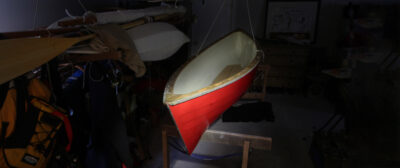
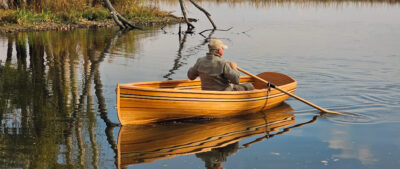
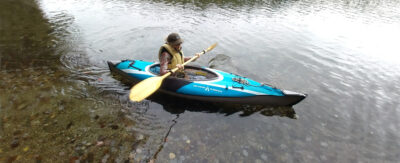
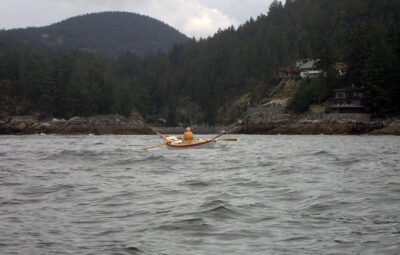
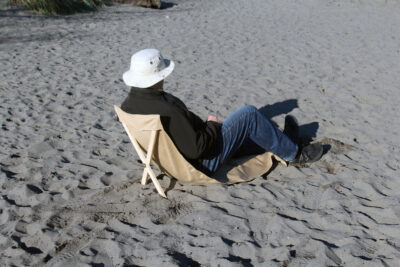
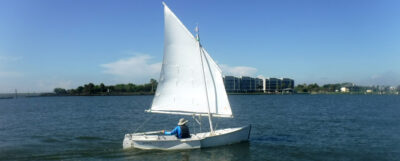
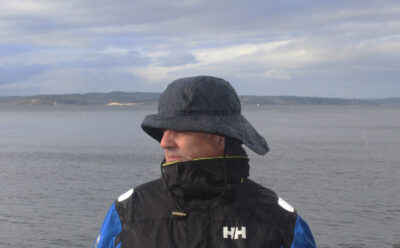
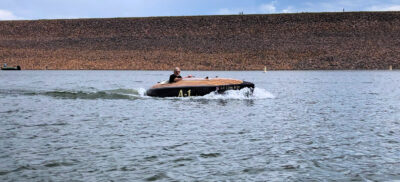
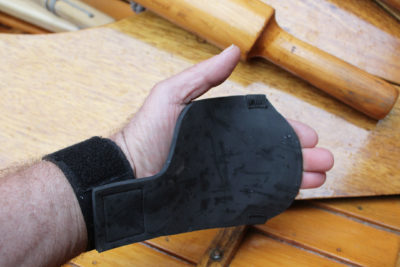
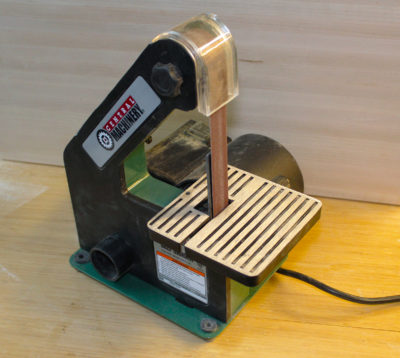
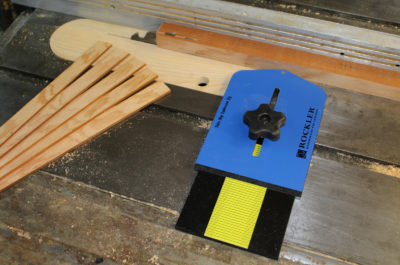
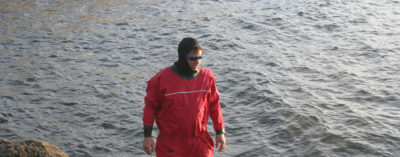
I highly recommend the waxed canvas smock at Best Coast Canvas. I’ve been putting mine through its paces. I’m a large fellow at 6’7” and broad and thin. When the first smock came it was a bit too short for my arms and torso and Leah reworked it for me so now I have great coverage. Cuts the wind better than any synthetic jacket I’ve had and keeps me warm and dry with heavy rain or spray, day in, day out. Plus I actually look like a sailor.
Thinking about getting the hat after reading this.
I got one of the smocks too, and mine was also a bit short in arms and torso. But I have long arms and torso for my height, so I bet our two experiences aren’t standard. Leah was fantastic to interact with. I haven’t had much need for the smock yet, only one day that’s rained appreciably since I got it and I worked during. So I only wore the smock on way to work, and swapped to an old Filson for work. The smock felt more breathable than the Filson even left open, and fit way better.
I left the Best Coast Canvas brand logo on, and I’ve taken them off on all my other clothes.
I want the hat too, but I am right between sizes. The wool jacket now, that’s what I truly yearn for. I’d like that vest too.
I might turn into a fanboy.